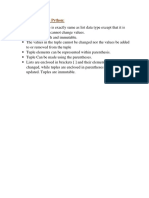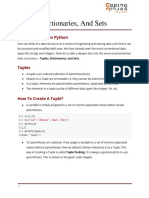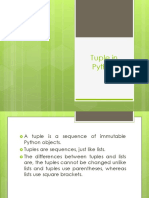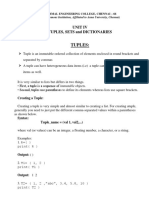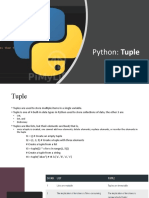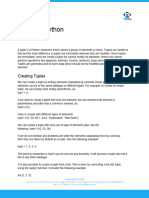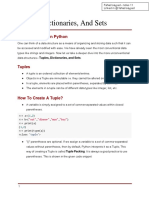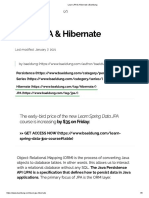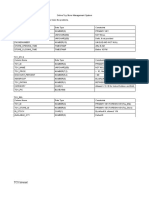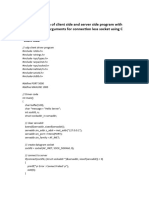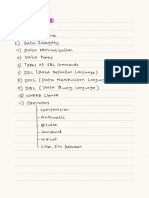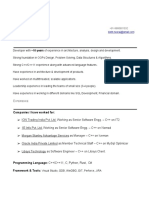0% found this document useful (0 votes)
27 views10 pagesTuple Data Structures
A tuple is an immutable data type in Python that can hold a collection of elements, which can be homogeneous or heterogeneous, and allows duplicate values. Tuples can be created using parentheses or without, and they support indexing and slicing. Key methods include len(), count(), index(), max(), min(), and sum(), while tuples cannot be modified after creation, but can be concatenated or multiplied.
Uploaded by
SATYACopyright
© © All Rights Reserved
We take content rights seriously. If you suspect this is your content, claim it here.
Available Formats
Download as PDF, TXT or read online on Scribd
0% found this document useful (0 votes)
27 views10 pagesTuple Data Structures
A tuple is an immutable data type in Python that can hold a collection of elements, which can be homogeneous or heterogeneous, and allows duplicate values. Tuples can be created using parentheses or without, and they support indexing and slicing. Key methods include len(), count(), index(), max(), min(), and sum(), while tuples cannot be modified after creation, but can be concatenated or multiplied.
Uploaded by
SATYACopyright
© © All Rights Reserved
We take content rights seriously. If you suspect this is your content, claim it here.
Available Formats
Download as PDF, TXT or read online on Scribd
/ 10


























